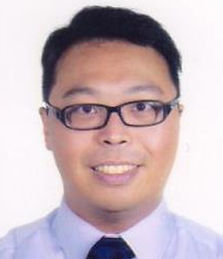
2. Introduction to the Project
Shallow soft-bottom marine ecosystems provide critical goods and services to coastal communities, ranging from the coastal protection and carbon sequestration role of intertidal mangroves to sustaining coastal fisheries through the nursery function of shallow sub-tidal habitats. Urban development and human activities of coastal cities (e.g., Hong Kong) pose a significant risk on the functionality of these shallow soft-bottom ecosystems. Conventional approaches of conservation, however, have only focused on protecting individual species rather than the function and integrity of our marine ecosystems.
This study will unravel a fundamental aspect of the functioning of these threatened ecosystems in Hong Kong, by conducting a territory-wide analysis of the food web structure and dynamics that sustain key ecosystem goods and services. Using the latest techniques in stable isotope analysis, the sources of nutrient sustaining secondary production will be identified. We will assess in what way and to what extent food web structure and nutrient dynamics may be impacted by imminent anthropogenic threats such as pollution and physical habitat disturbance.
Selected habitats (mangrove forests, tidal flats and shallow sub-tidal sediments) from the inner Deep Bay – Mai Po Marshes wetlands, the Southern Lantau region and the Double Haven area will be used to address specific study questions using a combination of field experimental, mesocosm or sampling approaches.
Based on published and observed data on community structure, key organisms of particular relevance to conservation and management (birds in inner Deep Bay, horseshoe crabs at the Southern Lantau region, commercial fish species in Hong Kong’s Southern and North-Eastern waters) and the immediate members of the respective food chains will be selected for focused studies.
This study will for the first time, enable us to understand how our soft-bottom ecosystems are trophically sustained. The knowledge obtained will have direct application for the conservation and management of marine habitats and ecosystems in Hong Kong, mainland China and beyond.
Project Team
Principal Investigator
Professor Joe Shing Yip LEE
Professor and Director, Simon FS Li Marine Science Laboratory, The Chinese University of Hong Kong
30 years of post-doctoral experience in soft-sediment coastal ecosystem ecology, with particular expertise in carbon dynamics of estuarine systems on urbanized coastlines. I have applied stable isotope analysis (both natural abundance and enriched isotopes) to studying many ecological problems, mostly on trophodynamics of coastal wetlands such as mangroves. My study of carbon flow in inner Deep Bay using stable isotopes (Lee 2000. Marine Ecology Progress Series 205:1-10; cited 97 times) was the first of its kind in Hong Kong. Since then I have published >20 international journal papers on trophic studies using stable isotopes as chemical tracers.

Co-Investigators
Professor Rudolf WU
Research Chair Professor, Department of Science and Environmental Studies, Education University of Hong Kong
Recognized internationally as an expert in marine ecology and marine pollution, published 264 papers in leading international journals.

Dr. Siu Gin CHEUNG
Associate Professor, Department of Chemistry, City University of Hong Kong
Specialises in coastal marine ecology, particularly the ecophysiology and conservation of arthropods and mollsucs; application of stable isotopes in marine ecological studies.

Dr. Stefano CANNICCI
Associate Professor, School of Biological Sciences, The University of Hong Kong
An international expert of mangrove macrobenthos ecology and crustacean feeding ecology. PI of an ongoing ECF Project on mangrove diversity and ecological status (ECF Project 69/2016).

Dr. Chi Chiu CHEANG
Associate Professor, Department of Science and Environmental Studies, Education University of Hong Kong
Specialises in marine biodiversity and conservation research.

Supporting Staff
Senior Research Assistant
Dr. Fen GUO
Research Assistant
Michael MA
Research Assistant
Leo CHIU-LEUNG



Project Significance and Expected Outcome
Food web dynamics not only provide critical knowledge on the energy support base, habitat use and trophic connectivity across habitats, but also an indicator of the health condition of communities, such as their resistance (ability to withstand environmental perturbation) and also resilience (ability to recover from disturbances). As a key attribute of communities, the structure and dynamics of food webs also underpin key ecosystem function and services, such as secondary (e.g. fishery) production. Knowledge of the trophic contribution of various habitats and the response of communities to human disturbance is fundamental to conservation and management of coastal ecosystems, especially their sustained services and capacity for supporting fishery production. With dwindling capture fishery resources and coastal aquaculture limited by competing uses, the prioritisation of coastal habitats for conservation and management of food sources and nursery sites is paramount. Currently there is a paucity of knowledge about the trophic dynamics of critical marine habitats in Hong Kong to enable the prioritisation and management decision processes.
No comprehensive food web dynamics study of a comparable scope has been conducted on the coastal soft-bottom ecosystems in Hong Kong. The PI of this project has completed a similar study on the Mai Po Marshes, evaluating the significance of the various natural and anthropogenic nutrient sources in supporting the bird community in inner Deep Bay (Li and Lee 1998; Lee 2000). Some works at the community or ecosystem levels have been conducted in freshwater habitats (Yam and Dudgeon 2005; Lau et al. 2008), rocky embayments (Wai et al. 2008) or coral communities (Baker 2013-6; Wong et al. 2017). Other works employing the stable isotope analysis approach have only focused on individual species groups (e.g. estuarine sharks Wai et al. 2012) or specific processes, e.g. pollution by fish farm wastes (Wai et al. 2011).
This project aims to use stable isotope analysis to elucidate the structure and function of food webs in local soft-sediment habitats and assess trophic connectivity that underpin cross-habitat ecological sustainability. Based on information obtained, we will evaluate their capacity for the provision of ecosystem goods and services (e.g. fishery production), as well as their resilience towards future natural and anthropogenic disturbances. This aim is directly aligned with Sustainable Development Goal 14 Conserve and sustainably use the oceans, seas and marine resources for sustainable development of the United Nations (United Nations General Assembly 2015). The scientific knowledge obtained from this project will not only be fundamental to achieve this goal, but more importantly, also provide essential data to inform policies for the management of local coastal ecosystems and conservation of Hong Kong’s rich marine biodiversity.
References
Baker DM 2013-6. A stable isotope survey of Hong Kong’s corals: Assessing the impact of nitrogen pollution on coral health and community biodiversity. RGC Early Career Scheme (ECS).
Li MS, Lee SY. 1998. Carbon budget for Deep Bay, eastern Pearl River estuary, China I.: a mass balance study and implications for shorebird conservation. Marine Ecology Progress Series 172:73-87.
Lee SY. 2000. Carbon dynamics of Deep Bay, eastern Pearl River estuary, China. II. Trophic analysis using stable isotopes of carbon and nitrogen. Marine Ecology Progress Series 205:1-10. Yam RSW, Dudgeon D 2005. Stable isotope investigation of food use by Caridina spp. (Decapoda: Atyidae) in Hong Kong streams. Journal of the North American Benthological Society 24:68-81.
Lau DCP, Leung KMY, Dudgeon D 2009. What does stable isotope analysis reveal about trophic relationships and the relative importance of allochthonous and autochthonous resources in tropical streams? A synthetic study from Hong Kong. Freshwater Biology 54:127-141
Wai TC, Ng JSS, Leung KMY, dudgeon D, Williams G 2008. The source and fate of organic matter and the significance of detrital pathways in a tropical coastal ecosystem. Limnology and Oceanography 53:1479-1492
Wai TC, Leung KM, Wu RS, Shin PK, Cheung SG, Li XY, Lee JH 2011. Stable isotopes as a useful tool for revealing the environmental fate and trophic effect of open-sea-cage fish farm wastes on marine benthic organisms with different feeding guilds. Marine Pollution Bulletin 63:77-85
Wai TC, Yeung JWY, Lam VYY, Leung KMY, Dudgeon D, Williams GA 2012. Monsoons and habitat influence trophic pathways and the importance of terrestrial‐marine linkages for estuary sharks. Ecosphere 3:8
Wong CWM, Duprey NN, Baker DM 2017. New insights on the nitrogen footprint of a coastal megalopolis from coral-hosted Symbiodinium δ15N. Environmental Science and Technology 51:1981-7.
